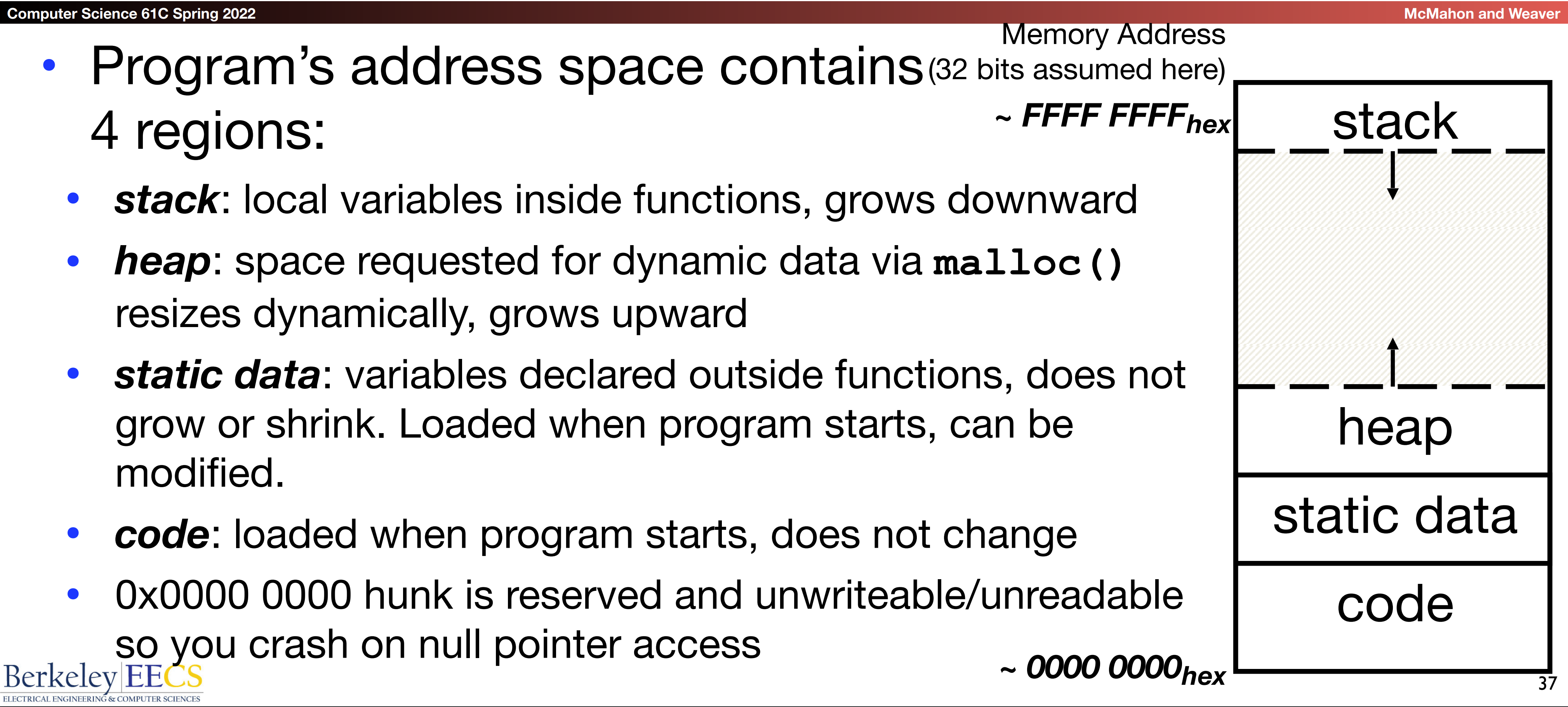2 C Intro
约 349 个字 25 行代码 1 张图片 预计阅读时间 2 分钟
- C compilation simplified overview:
foo.c -> compiler -> foo.o -> linker -> foo.out - CPP: C Pre-Precessor.
foo.c -> CPP -> foo.i -> compiler- Commands begin with
# - 将注释转换成空格
- Commands begin with
- C vs. Java
{u|}int{#}_t: 指定存储方式,如uint8_t,int64_t- structure:
- 一个结构体中的字节被对齐,故不能简单的进行加法来得到整个结构体的大小
char: 一个 byte,不需对齐short: 两个 bytes,需要对齐到0, 2, 4, ...处int和void *: 四个 bytes,不需要对齐- 如果最终大小不为 4 的倍数,则扩展到 4 的倍数(如
13 -> 16)
- 使用
union可以指定用最大的元素的大小进行对齐:
- 获取 main 函数的参数:
- 大端、小端表示的不同
Memory Management¶
- Stack:
- 包括若干 frames,其中有 return address、arguments、space for local variables
- 当一个 frame 执行完毕后,stack pointer 上移,释放空间
- Heap:
malloc(size_t n): 分配未初始化的内存,返回类型void *calloc(size_t nmem, size_t size): 分配 0 初始化的内存,大小为nmem * sizefree(void *): 释放内存,只能释放由malloc分配的- 如
int *a = malloc(sizeof(int) * 2); free(a+1)是不可行的
- 如
realloc(void *p ,size_t size): 改变之前分配内存的大小,返回类型void *- 可能会导致内存地址移动。其他指针不会随之一同改变!
- 当
p == NULL时,和malloc行为相似 - 当
size == 0时,和free行为相似
String¶
- 拷贝字符串:
